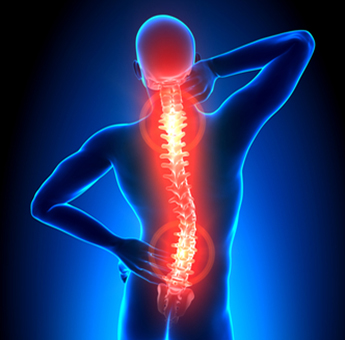Pediatric Idiopathic Scoliosis Overview
Types of pediatric idiopathic scoliosis include adolescent, juvenile and infantile idiopathic scoliosis.

What is Pediatric Scoliosis?
Scoliosis generally develops during childhood. The terms pediatric and childhood here refer to patients who have not completed their growth (i.e., they have not finished going through puberty and are often under the age of 18). Pediatric scoliosis is distinctive from adult scoliosis in terms of the causes. In addition, the goals of treatment differ in skeletally immature patients.
Scoliosis is a musculoskeletal disorder that adversely affects the shape of the spine (backbone). The spine is composed of bones called vertebrae. Normally, when viewed from behind, these bones (vertebrae) run down the back in a straight line. There are normal (front-to-back) curves of the spine; however, scoliosis is a side-to-side curvature of the spine. Therefore, a scoliotic spine (when viewed from behind) will not be straight and may instead look like the letter "C" or "S", due to the side-to-side (right-to-left) curvature.
Pediatric Idiopathic Scoliosis
Idiopathic scoliosis is the most common type of pediatric scoliosis; approximately 80% of individuals with scoliosis are considered idiopathic. Idiopathic simply means of unknown origin; therefore, idiopathic scoliosis means that the exact cause of scoliosis is not known (i.e., there is no clear cause).
An abnormal curvature of the spine can occur at any age. Therefore, pediatric idiopathic scoliosis can be further broken down (or classified) by the age of the patient when it is first identified. Types of idiopathic scoliosis include:
- Infantile Idiopathic Scoliosis
- Juvenile Idiopathic Scoliosis
- Adolescent Idiopathic Scoliosis
Infantile Idiopathic Scoliosis
Idiopathic scoliosis diagnosed in a child between birth and 3 years of age is called infantile idiopathic scoliosis. This is a rare condition; it accounts for fewer than 1% of all cases of pediatric idiopathic scoliosis. Many of these scoliotic curves will resolve or stabilize without treatment. However, some can progress and may eventually become a severe curve. Infantile idiopathic scoliosis is more common in boys than girls.
Juvenile Idiopathic Scoliosis
Idiopathic scoliosis diagnosed in a child between 3 to 9 years of age is called juvenile idiopathic scoliosis. This is type of scoliosis accounts for 12-20% of pediatric idiopathic scoliosis cases; it is more common than infantile but less common than adolescent idiopathic scoliosis.
This condition is different than the other two types of pediatric idiopathic scoliosis because it develops during a period in which the spine does not undergo significant growth. Juvenile idiopathic scoliosis rarely resolves without treatment. Abnormal curvatures often progress (get worse) in children with juvenile idiopathic scoliosis and, therefore, patients with this type of scoliosis are more likely to require active treatment.
Adolescent Idiopathic Scoliosis
Idiopathic scoliosis diagnosed in a child between 10 years of age until skeletal maturity (approximately 18 years of age) is called adolescent idiopathic scoliosis. This is the most common type of pediatric scoliosis, approximately 80% of all cases. Abnormal curvatures often do not progress (get worse) in patients with adolescent idiopathic scoliosis. Adolescent idiopathic scoliosis occurs more often in girls than boys.
Incidence Rate
Although children of all ages can develop scoliosis, onset primarily occurs between 10-15 years of age. For adolescents with scoliosis, curvatures generally get worse during a growth spurt. Scoliosis has shown a tendency to run in families; it is estimated that approximately 30% of pediatric scoliosis patients have a family history of scoliosis. Statistics vary as to the percentage of school age children affected by pediatric scoliosis, it is thought to be somewhere between 2-5%. However, only a fraction of these patients develop abnormal curves large enough to require active treatment.
Although it is often said that idiopathic scoliosis occurs more often in girls than boys. This is a generalization and there are exceptions (e.g., infantile idiopathic scoliosis is more common in boys than girls). When looking at the population of pediatric idiopathic scoliosis patients with small curves, boys and girls are essentially equally affected. However, research has shown that scoliotic curves progress (get worse) more often in girls than boys. Therefore, girls are more likely to have more severe curves and require treatment than boys with idiopathic scoliosis.
Pediatric Idiopathic Scoliosis Symptoms
Most individuals with pediatric idiopathic scoliosis will not experience any pain. Potential signs and symptoms of idiopathic scoliosis can include:
- Uneven hips and/or shoulders (one is higher than the other)
- One shoulder blade sticks out more than the other
- Spine curves to one side
- Backache or low back pain (this is an uncommon symptom)
